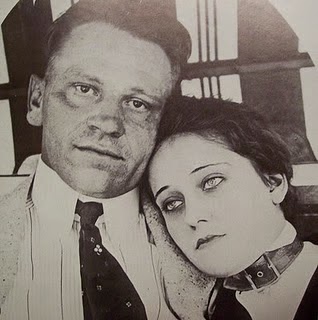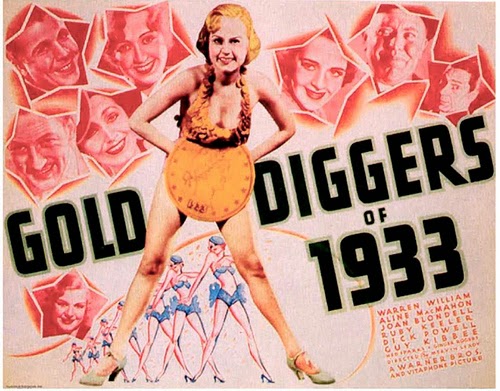As I said before, despite the age difference, Hollywood, family and arguments, Swanson and Beery were finally marriage. It was on the couple’s wedding night that the marriage (according to Swanson) turned violent. Swanson claims during their first night together and with her mother in an adjoining room, Beery raped her. Beery had apparently spent a couple hours drinking at a local bar and was drunk when he went up to bed that night. This is a segment of Swanson’s account of the night:
I was brushing my
hair when he came into the room. He gave me a look that made me turn away, but
he didn’t say anything. Then he turned out the light and in the darkness pulled
me to him. I gave a coquettish little command to stop that I thought would make
him laugh. Still he said nothing. He turned me and pushed me backward until I
fell on the bed. He fell beside me, and there was nothing romantic about the
way he began to repeat that I was driving him crazy.
He was raking his hands
over me and pulling at my nightie until I heard it rip. I pleaded with him to
stop, to wait, to turn on the light. His beard was scraping my skin and his
breath smelled. He kept repeating obscene things and making advances with his
hand and tongue while he turned his body this way and that and awkwardly undid
his buttons and squirmed out of his clothes.
Then he forced my body into
position and began hurting me, hurting me terribly. I couldn’t stand it. I
begged him to stop, to listen to me, and finally when I couldn’t stand it any
longer, I screamed. He told me to be quiet, not to wake the whole hotel, and he
said it in a voice of quiet, filthy conspiracy. The pain became so great that I
thought I must be dying. I couldn’t move for the pain. When he finally rolled
away, I could feel blood everywhere.
The shocking events of that night made
Swanson immediately regret her hastily marriage but could not foreseeably get
out of it. After the honeymoon the Berry’s moved into Beery’s parent’s house.
They were apparently “icy and distant” and Swanson after only a fortnight after
the wedding was seriously contemplating divorce. But nothing seemed to improve
for the newlyweds, with Beery’s infidelities, drinking, debts and uncertain
acting career compounding to make Swanson’s life unbearable. A month later
Swanson found she was pregnant. Beery, still wanting to keep the marriage
together for the sake of his career, told his wife everything would get better
and appeared overjoyed at her news. A couple days later after suffering stomach
pain, Beery gave Swanson a handful of tablets he claimed to have gotten from a
pharmacy. The caused Swanson to be rushed to hospital and, near death and in
excruciating pain, she was told she had lost her baby. When she recovered, she later
found the pills were a method to induce a miscarriage and that Beery had
knowingly aborted her child.
 |
| A scene from Teddy at the Throttle (1917) |
Most sources for the marriage between Swanson and Beery, have admittedly been either unreliable or probably biased. Swanson’s autobiography Swanson on Swanson plays a large part in constructing the past events. This information could be prejudiced but I can’t believe Swanson would fabricate rape and a forced abortion. Likewise, Parson’s account of their early relationship is also problematic. She was known to have special relationships, deals and partialities towards or against certain personalities and, in addition, the article was written over fifteen years after the events occurred. Perhaps – like most publicity driven tales in Hollywood – when attempting to understand the events one has to accept the fact of weighing up biased evidence against biased evidence. As both Swanson and Beery have passed away nothing more can be known except the small bits of history, articles and an autobiography they left behind.
 |
| Beery also from Teddy at the Throttle (1917) |












